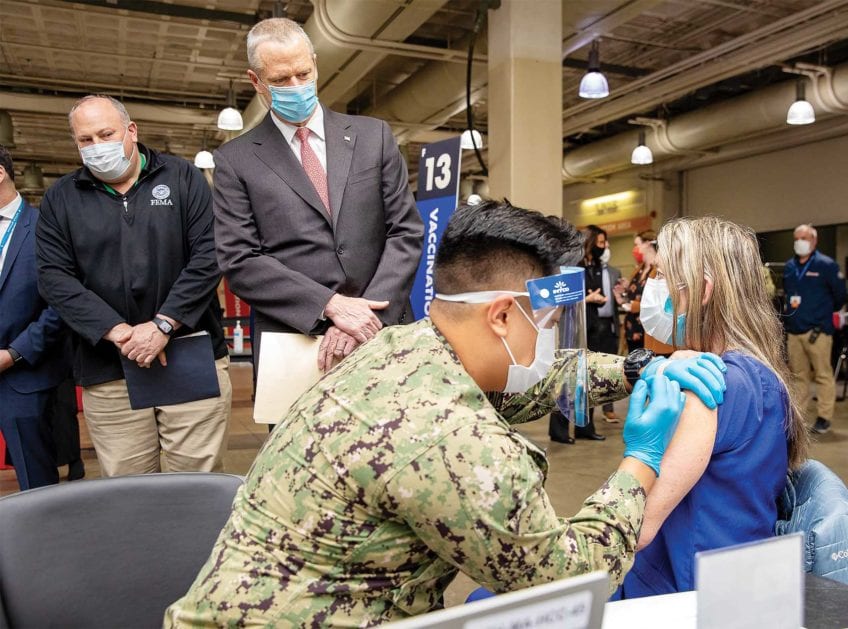
Most of us are more familiar with the musculoskeletal system than we care to be. That low back pain or twisted ankle was a rude introduction. And that hacking cough brought us up close and personal with the respiratory system.
But there’s another system that works silently in the background. It’s on constant guard looking for intruders — something that should not be there. The immune system can distinguish between normal, healthy cells and unhealthy cells. When it detects an outsider — bacteria or a virus, for example — it readies forces to eradicate it.
What’s even better, it can often remember. If the virus tries to enter again, its entry is blocked.
Immunity
There are two types of immunity. Natural immunity occurs when a person contracts a particular disease — measles, for example. Many people born before 1957 were infected with the disease. Most are now permanently protected from re-infection.
Vaccine-induced immunity, on the other hand, occurs when a vaccine imitates the infection. This causes the immune system to start producing antibodies in defense. Antibodies are the work horse of the immune system. They are blood proteins that are tasked with finding an infection and marking it for destruction.
Regardless of the type of immunity, the response is not immediate. It takes the immune system a few weeks to complete the protection.
Herd immunity is not an actual form of immunity. Rather, it measures the overall protection of a community when a large portion — the herd — becomes immune to a disease, thereby reducing or preventing its spread. As a result, the whole community becomes protected and not just those who are immune. According to the Centers for Disease Control and Prevention, depending on the contagiousness of an infection, usually 50% to 90% of a population needs immunity to activate herd immunity.
Types of vaccines
There are several types of vaccines. Most often a weakened form of the disease is used. The MMR combined vaccine for measles, mumps and rubella is an example. The flu shot, on the other hand, uses an inactivated, or killed version of the virus.
The Moderna and Pfizer vaccines for COVID-19 have a different approach. They use messenger RNA, or mRNA to make the surface protein, known as the spike, that’s characteristic of the COVID virus. Once injected, the mRNA provides the instructions to make the spike protein. Our immune system then recognizes that the protein doesn’t belong there and sets out to destroy it. This actually isn’t a new role for the mRNA. Its job in the body is to make proteins. The mRNA disintegrates rather quickly after it is injected.
The Johnson & Johnson vaccine is called a viral vector vaccine. It uses a modified version of a deactivated cold virus called adenovirus to deliver directions to your body to make the spike protein. Your immune system can then make antibodies to protect you against COVID-19.
This vector vaccine is safe because the virus can’t replicate in human cells or cause disease.
Efficacy versus effectiveness
Efficacy measures the protection provided by a vaccine under controlled conditions, such as a clinical trial. Effectiveness on the other hand, measures how well it works in the real world. That will be determined by a person’s age, underlying chronic conditions, and largely how the vaccine is distributed and utilized in communities.
No vaccine is 100% effective. That’s generally because not all immune systems generate an adequate response. Some vaccines come pretty close, however. The polio vaccine offers 99% effectiveness after three doses. The chickenpox vaccine is between 85% and 90% effective in preventing infections.
It is too soon to know the long-term effectiveness of the COVID-19 vaccine. However, initial results from the CDC seem promising. The study found that the risk of infection two or more weeks after injection of the mRNA vaccine was reduced by 80% following a single dose and 90% following the second dose. However, even if not 100% effective against the virus, based on clinical studies, the vaccine can help keep you from getting seriously ill, even if you do get infected.
That’s a huge benefit.







